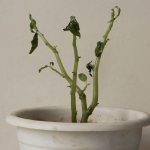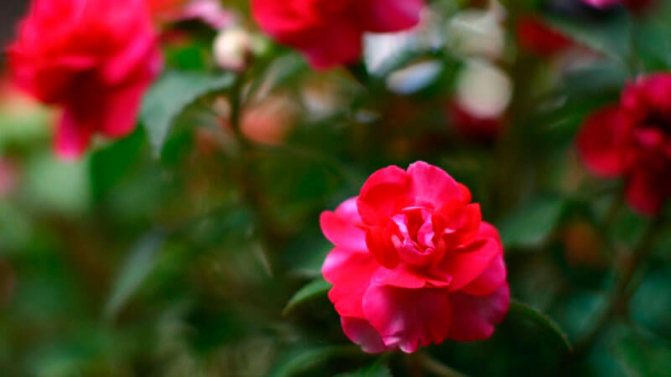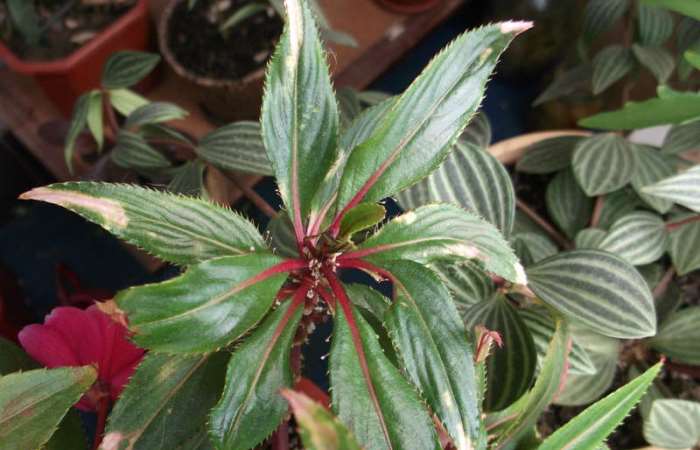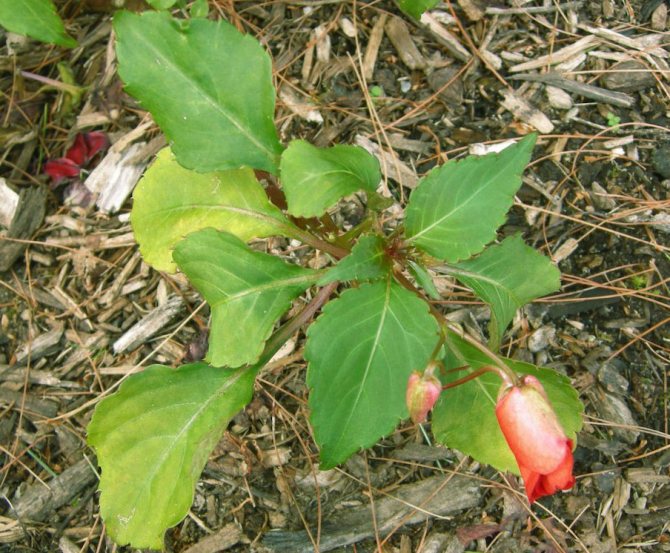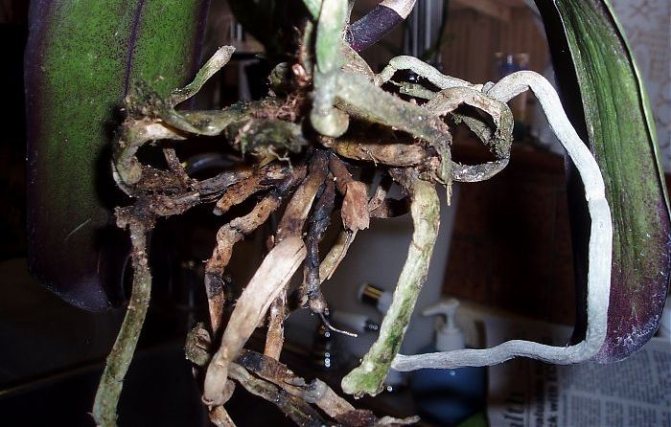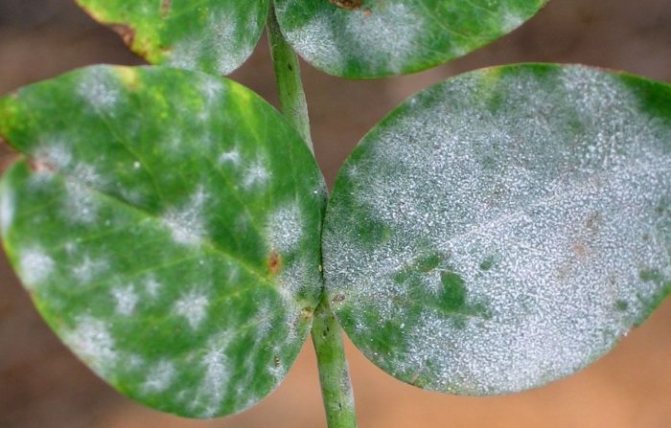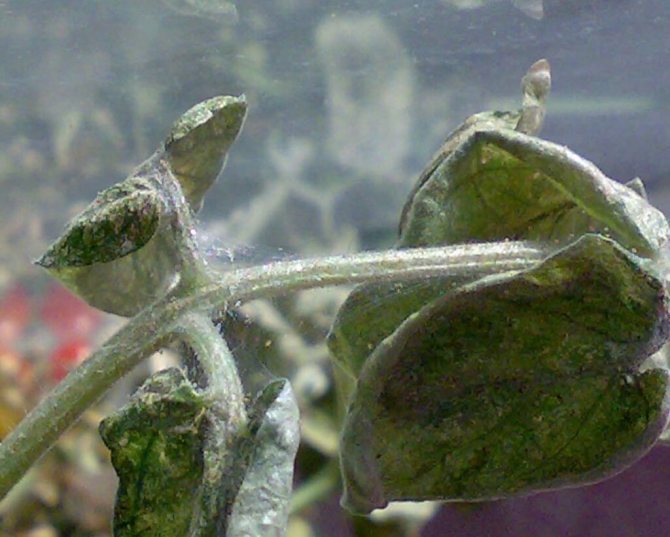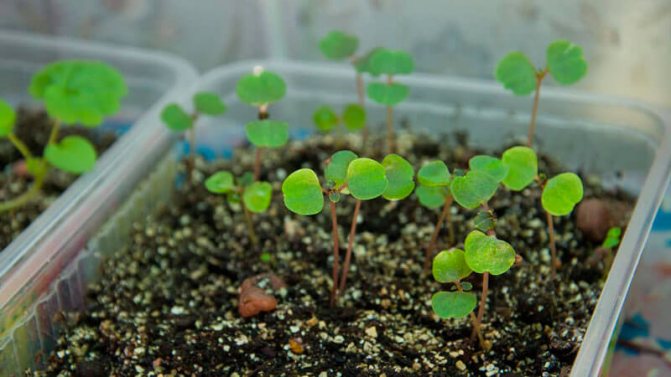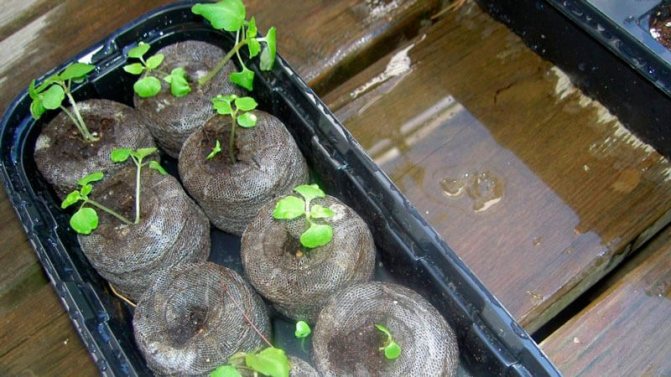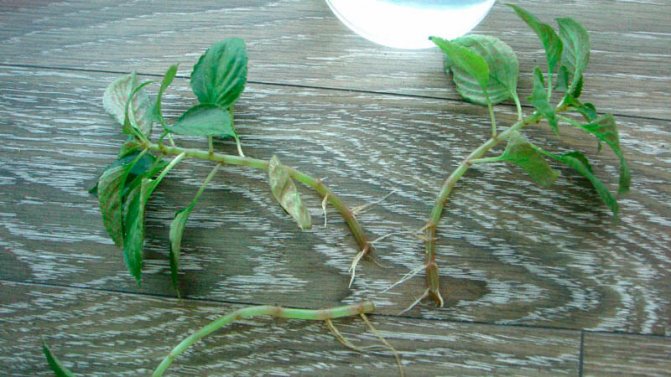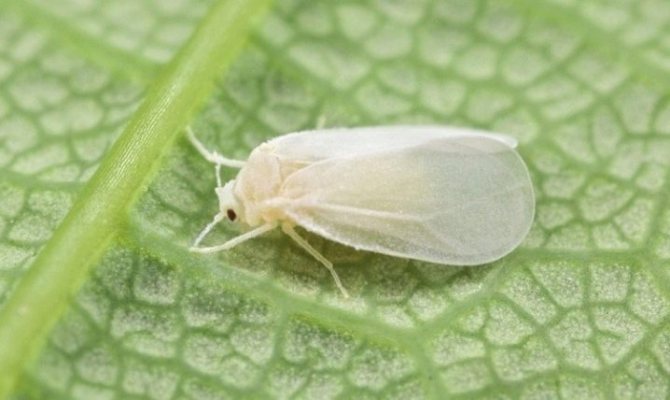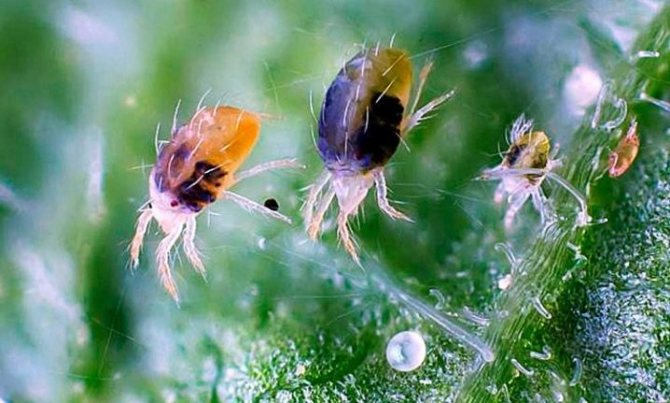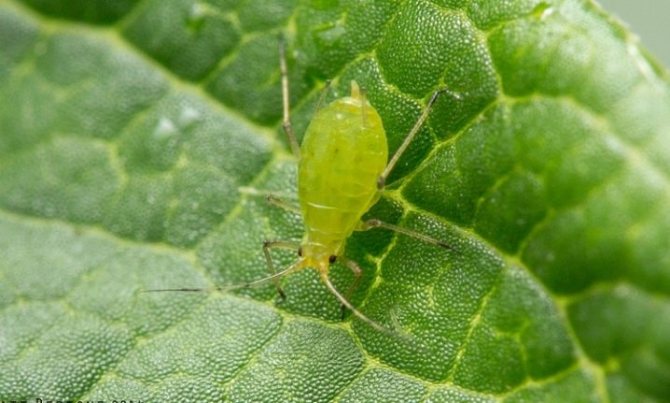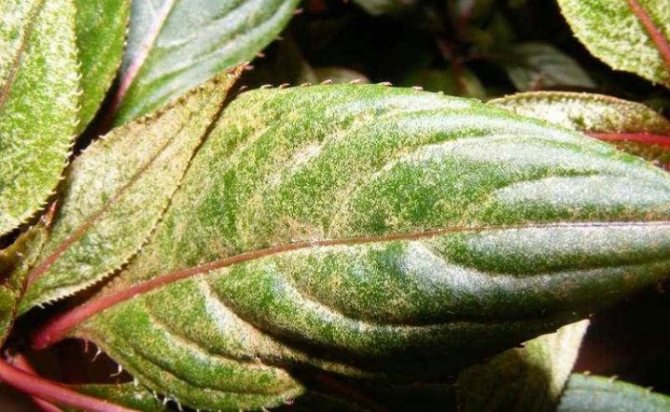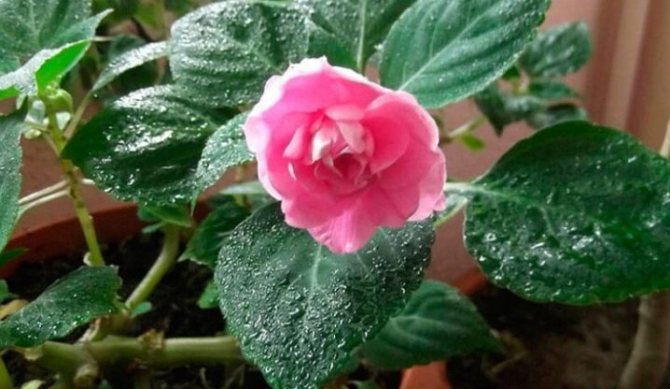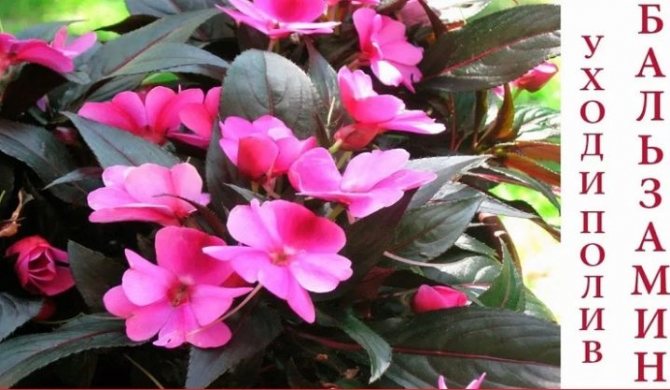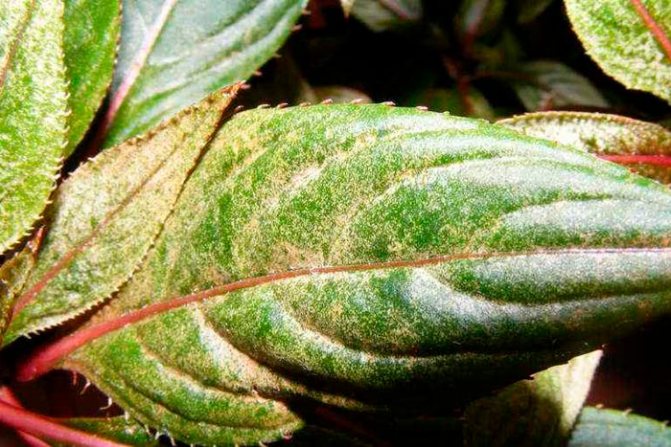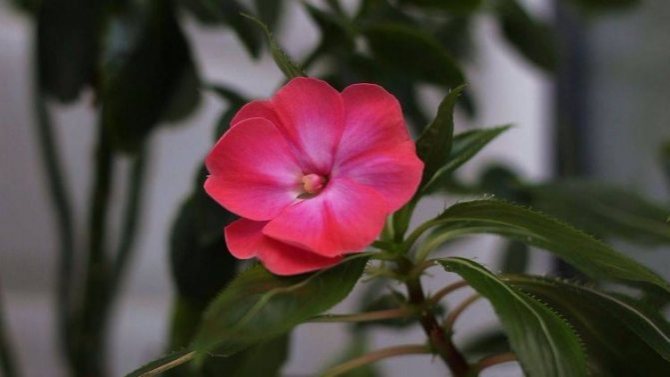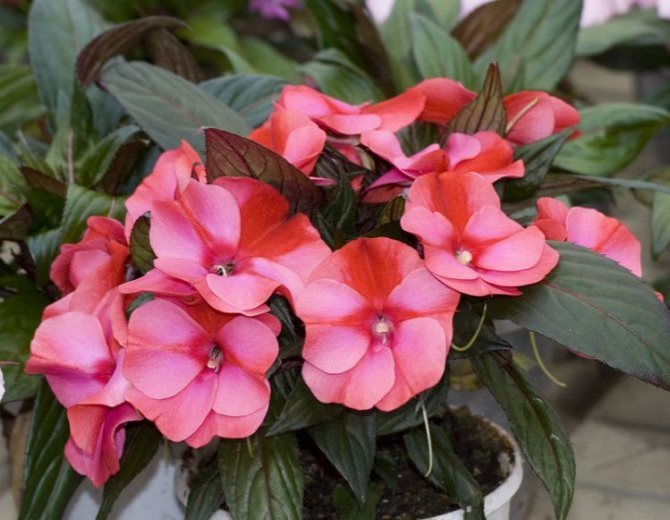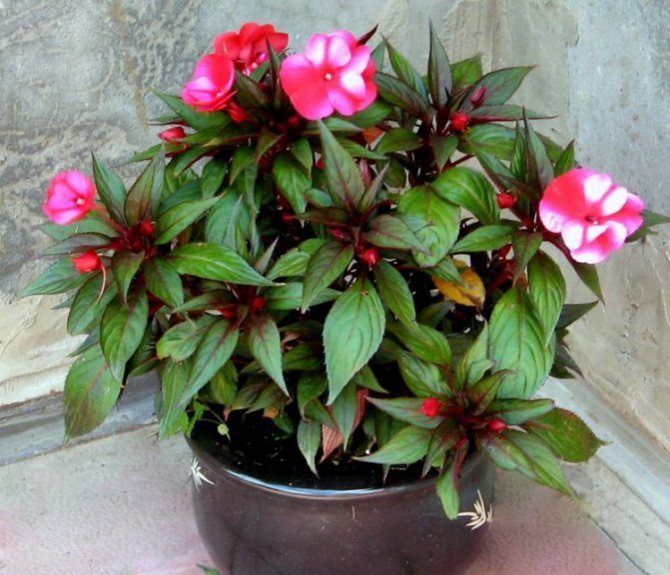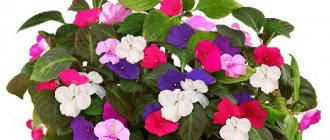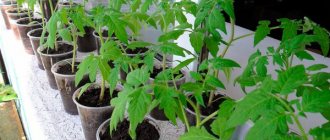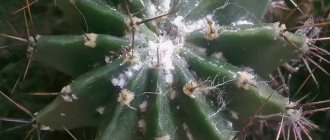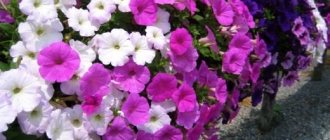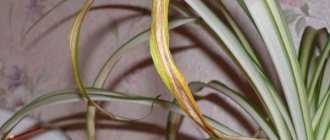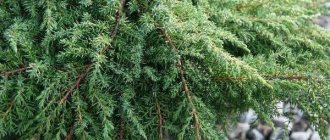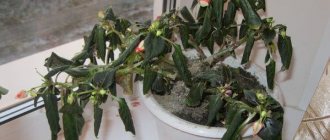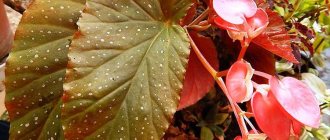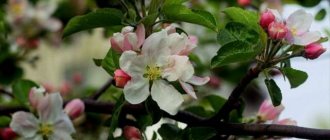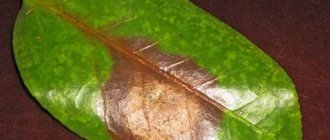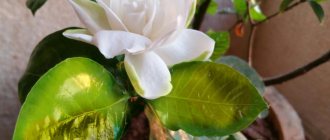Probably, there is not a single grower who would not like the delicate handsome balsam. A lush bush with rich green foliage is amazingly beautiful in itself, but when delicate inflorescences begin to open on it every day, and this continues for quite a long time, you just can't take your eyes off the flower. But it is not in vain that they believe that balsam has a temper, to put it mildly, hot-tempered. I almost forgot to water the plant, and now the crown has disintegrated, the leaves have sagged with rags, or even "leaf fall" has completely begun. Why does this happen and how not to lose your pet?
There may be several reasons why the leaves of a wet vanka fall off:
- changing conditions of detention;
- disease;
- damage by pests.
Flower diseases
The plant belongs to perennials... In common people he is also called Vanka wet, Impatient and Diligent Lizzie. Its stems are quite fragile, the leaves are oval with jagged edges. Their color varies from green to brown-purple. The flowering period is from May to December.
The main pests on Balsamin are insects such as whitefly, spider mite, thrips and claw mites.
As for diseases, these are gray rot or other fungal diseases caused by excessive moisture.
Why do balsam leaves fall - what to do?
Like many representatives of this species, the leaves fall off due to hypothermia and lack of light. If the plant is on a windowsill, then it must be rearranged to a warmer place, but with sufficient lighting.
Also, the problem can arise due to irregular watering. If the soil in the pot is dry, then it is worth increasing the frequency of watering.
In some cases, leaf fall can be caused by pests. In that case, identify the threat and treat the entire plant with a special pest control.
Why do balsam leaves curl - what to do?
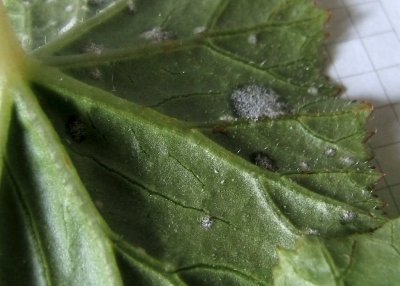
Leaf curling is a symptom of the appearance of multi-claw mites or spider mites. The infected parts must be removed, and the flower itself must be treated with a special solution.
Why do balsam leaves turn yellow?
Yellowing of the leaves can be caused by a lack of moisture or the appearance of a spider mite.
It is necessary to adjust the frequency of watering and treat the leaves from this pest, after making sure that it appears.
Why do Balzamin's buds fall off?
Balsam sheds buds when the soil is overdried or waterlogged.
The buds may fall off during the adaptation period, when it was recently purchased and is trying to adapt to new conditions.
Balzamin leaves dry - what to do?
This means that the plant feels a lack of moisture. Increase the frequency of watering.
The stems are pulled out
The stems are stretched out due to lack of light and excessively high air temperature in the room.
To avoid problems, move the flower to a brighter and cooler place.
Weak bloom
If the plant blooms weakly, it means that he may not have enough light, nutrients. Also, the problem may be hypothermia and premature transplant.
Place the flower in a sunny, warm place and fertilize with any suitable fertilizer.
Viruses infecting the plant


A flower can usually be affected by only one virus - gray mold. This is due to excessive watering and high humidity in the room.
Signs of the appearance of gray rot are wilting and falling leaves.
To avoid root decay, adjust the watering process and transplant the plant into a pot with new soil, after rinsing the roots to get rid of the virus in the soil. Water only after the soil is completely dry.
Useful video
In this video, you will learn more about pests and diseases:
Useful materials
- Below is a list of articles that may be of interest to you:
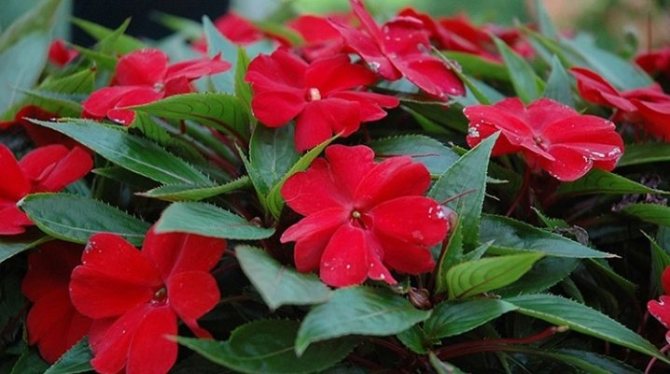

Balsam is an elegant houseplant that captivates with its fragility and spectacular flowering. Another popular name is the "Vanka wet" flower. According to experienced flower growers, the cultivation of these unpretentious creatures is within the power of even beginners who are taking their first steps in indoor plant growing. However, even such unpretentious flowers are not protected from problems associated with diseases and pests. It is worth considering what diseases and parasites pose the most common threat to balsams, how to determine in a timely manner that plants need help.
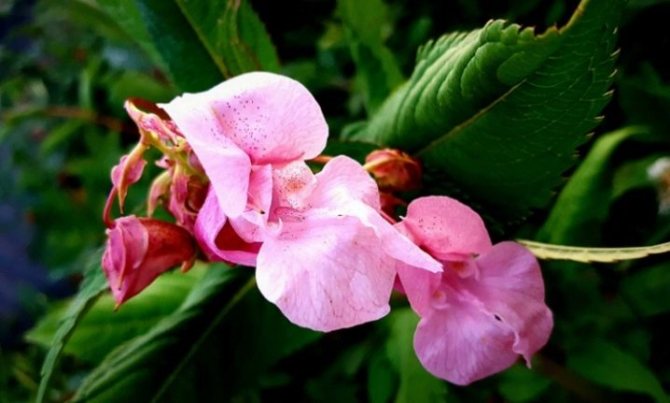

Balsam pests
Spider mite
Signs of the appearance of a spider mite are yellow specks on the surface of the leaves. If you do not engage in treatment, then these specks will develop into large spots that will be discolored and dry.
Spider mites are small insects that live on the inner surface of leaves.
Typically, the appearance of a spider mite is caused by dry air and elevated temperatures in the room. Therefore, for prevention, constantly spray the plant with water.
To avoid the spread of the pest, the affected parts of the flower must be removed. If the lesions are still mild, you can rinse the leaves with soapy water or mineral oil.
If the disease is already severe enough, the leaves must be processed "Fitoverm", "acarin", "vertimek", "lightning" or other drugs.
Whitefly
Whitefly is a small insect, two to three millimeters in size with white wings, insect larvae are also white and they do the most harm.
The disease can be noticed by the yellowing of the leaves and the presence of specific sticky secretions on them, you can also see insects on the inner and outer sides of the leaves.
To resist the whitefly, the leaves are treated with special agents, based on potassium soap or other preparations: Aktellik, Iskra, Biotlin, Tanrek, Bison, Karbofos, Inta-Vir and others.
Multi-claw mites
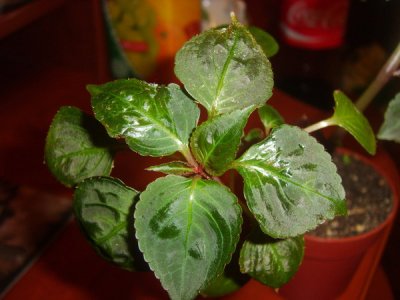

Claw mites are small transparent white insects, about a third of a millimeter in size.
Symptoms of the appearance of multi-claw mites are hardening and curvature of the leaves. They practically do not grow and begin to curl around the edges.
The reason for the occurrence of mites of different claws is the increased temperature and humidity in the room.
To prevent the appearance of mites, the plant should be checked regularly.
If the balsam is already infected, use medications to treat it, such as: "Fitoverm", "lightning", "vertimek", "akarin".
Thrips
The signs of this disease are the deformation of young leaves, since their growth point is bent under the influence of thrips. Also, the signs of their appearance are the appearance of spots on the flowers and the browning of the petals along the edges.
Thrips actively appear in the area of flower stamens and are carriers of leaf bronzing.
In order to control thrips, the infected leaves and flowers must be removed immediately.It is especially worthwhile to carefully monitor young plants, since even from short-term contact with pests, they can forever be spoiled.
It is necessary to process a flower from thrips such drugsas "aktara", "fufanon", "aktellik", "spark", "tanarek" and others.
It is necessary to use special preparations in a course of several procedures with a difference of 4-5 days, since insecticides may not affect all periods of insect development.
Common diseases of balsam and their treatment
One of the main signs indicating that "Vanka is wet" requires the help of a grower is a change in the appearance of the plant. Strange staining, dropping, discoloration or wilting of leaves are the most common signals that indicate a problem. In most cases, the cause of the development of diseases or damage to balsam by pests is improper care.
When the conditions of keeping the plants are violated, immunity begins to rapidly decrease, ensuring their resistance to parasites and pathogens. Some diseases are detrimental to balsams. Given this fact, it is important to take all the necessary measures in time, barely noticing that the flower has acquired a painful appearance.
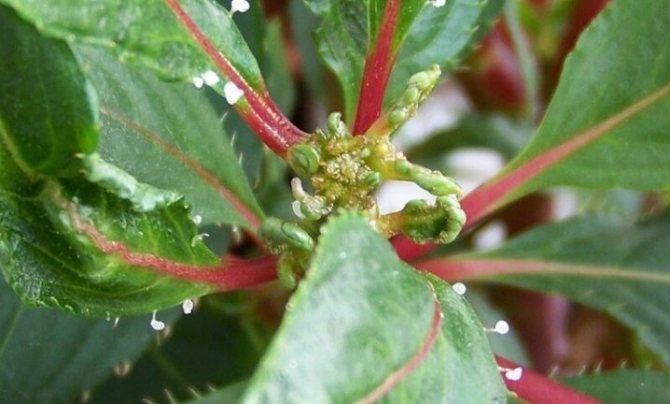

Bacteriosis
The fact that the plant has become a victim of a dangerous disease - bacteriosis, is evidenced by the formation of gray-brown spots on its leaves. As the disease progresses, traces of the lesion turn black-brown. Among the main causes of bacteriosis, flower growers call an excess of moisture in the soil. In addition, it is possible to infect balsam with bacteriosis pathogens through infected (low-quality) soil or untreated instruments. This disease is very dangerous, since most often the plant affected by it dies rather quickly.
In most cases, diseased flowers must be destroyed. However, you can try to compete for your green pet as follows:
- remove all affected parts of the plant;
- thoroughly spray the bush and soil in the pot with a solution of copper oxychloride (4 grams of substance per 10 liters of water);
- repeat the treatment after 2 weeks.
Important! During treatment, the plant must be isolated from healthy flowers. Given that this disease is highly contagious, the risk of spreading throughout the green collection is very high.
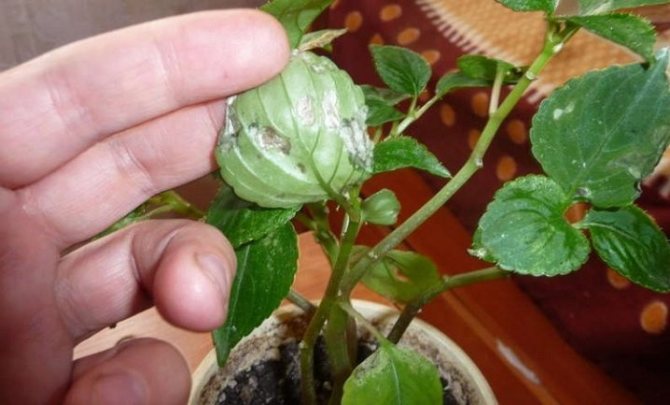

Powdery mildew
The fact that the plant has suffered from powdery mildew is indicated by specific whitish spots that form on the leaves. If you do not start treating the disease in a timely manner, very soon the affected leaves will fade and fall off. The main causes of this disease are violations of the temperature and humidity regime, incorrect watering and lack of lighting. The powdery mildew treatment complex provides for such measures as:
- removal of the affected parts;
- treatment of the bush with a soap and soda solution (1 tablespoon of soda ash, 2 tablespoons of soap, 5 liters of warm water); the treatment of the plant is carried out using a spray bottle for indoor flowers;
- after 1.5–2 weeks, the procedure is repeated.
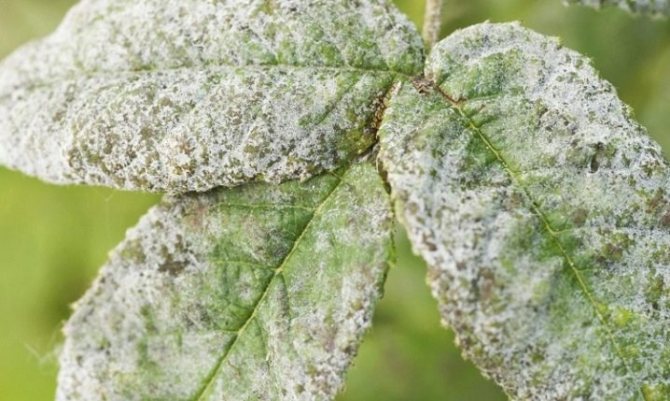

Mosaic
Mosaic is one of the most dangerous diseases that lead to the death of balsams. Specific symptoms of this disease are the formation of yellowish spots and deformation of the foliage. As the disease progresses, the tissue of the affected leaf plates undergoes necrosis, as a result of which the plant gradually turns yellow and eventually dries up completely. The main carrier of the causative agents of this disease are thrips - tiny parasites that live in the soil.
Since there are currently no effective treatments for this disease, diseased plants are usually destroyed.
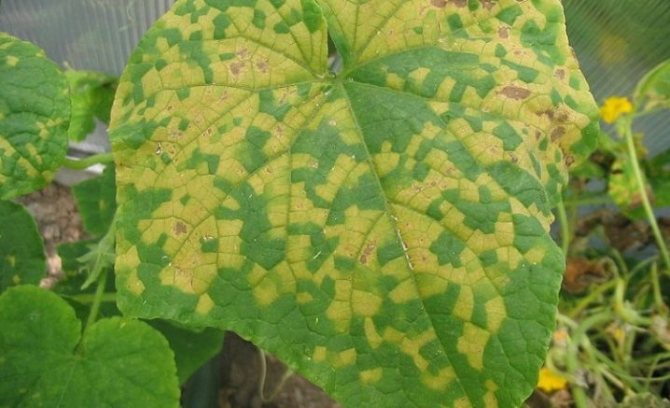

Rot
Failure to follow the recommendations for caring for plants often becomes the cause of the development of an insidious fungal disease - gray rot.With this problem, dirty brown spots begin to form on the foliage of the affected balsams. Novice flower growers are often faced with the development of rot on balsams as a result of watering with cold water, as well as due to too low room temperature. To preserve the plant, you need to adhere to the following actions:
- remove all infected parts of it - leaves and stems covered with spots, in this case they are cut off with a sharp disinfected blade, after which they are destroyed;
- after the procedure, the diseased bush is thoroughly treated with fungicidal preparations ("Fundazol");
- to make the treatment more effective, you can sprinkle the plants with products prepared according to folk recipes, for example, an infusion of dry garlic or onion peels.
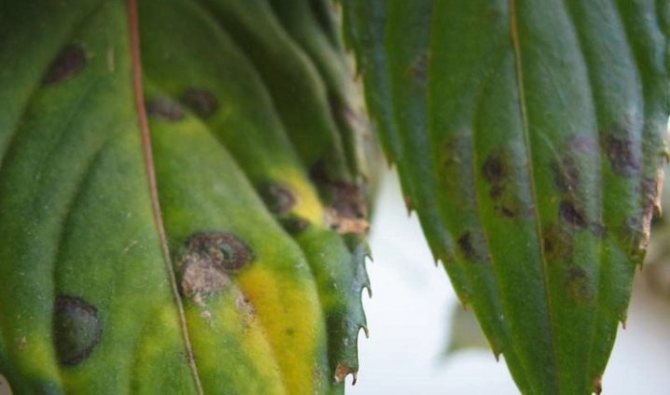

Prophylaxis
In order to avoid the occurrence of diseases in a plant, it is necessary to carefully care for it.
Water the flower in time. Do not overmoisten the soil, observe the temperature regime. The optimum temperature is 12-25 degrees.
To prevent the occurrence of various diseases, feed every 15-20 days from May to September, and periodically wipe the leaves with soapy water, and then rinse them with a shower.
Why does balsam wither and dry?
Withering and drying of a plant is a common result of improper care. At the same time, both deficiency and excess of moisture in the air and soil mixture can cause such a problem. To restore the appearance of a plant affected by drought, it is enough to resume the previous irrigation regime. But it is also impossible to allow waterlogging of the soil, so as not to destroy the roots.
Another reason for the wilting of balsam is often lack of nutrients. In this case, you can give strength to the plant by feeding with humic fertilizers. And also flower growers claim that in some cases iodine will help to eliminate the painful appearance of a flower. To do this, no more than 1 time per month, use a solution of 2 drops of iodine and 2 liters of water. With this solution (about 50 ml per plant), carefully spill the earth against the walls of the pot so as not to burn the root system.
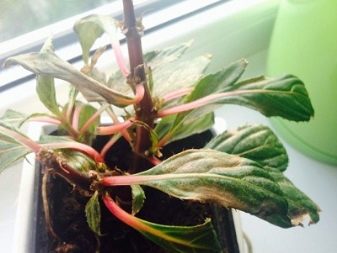

How to revive a flower?
For
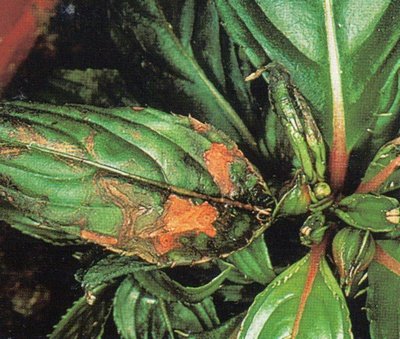

in order to reanimate an already damaged flower, it is necessary to remove the infected areas. The plant itself must be treated with special preparations that help get rid of insects.
If you are afraid of recurrence, re-process after 5-6 days. This will allow you to get rid of insects, which in different phases of the life cycle may be immune to the components of such drugs.
If you become a problem gray or root rot, then limit watering until the soil is completely dry.
Balsam is a rather finicky, but beautiful houseplant. It will be easy to grow it if you follow all the requirements for watering, lighting and temperatures.
What pests attack balsam and how to deal with them
Spider mite
When balsam is attacked by a spider mite, yellow specks appear on the surface of the foliage, which, if untreated, develop into large dry spots. The pest successfully parasitizes if the room temperature is high or humidity is low. Therefore, as a preventive measure, it is recommended to periodically spray the flower with water.
To prevent the spread of spider mites, the affected leaves must be removed. For minor lesions, soapy water or alcohol can be used. If the infection has developed strongly, the leaves are treated with such effective drugs as Fitoverm, Aktelik, Vertimekom, Akarin and other analogs.
Thrips
When this pest appears, young leaves are deformed, the growth point is bent, spots appear on the flowers. Thrips multiply in the center of the corolla.They greatly weaken, deform and disfigure the flower, prevent it from growing and developing normally. When pests attack, all affected areas are removed and destroyed and treated with insecticides.
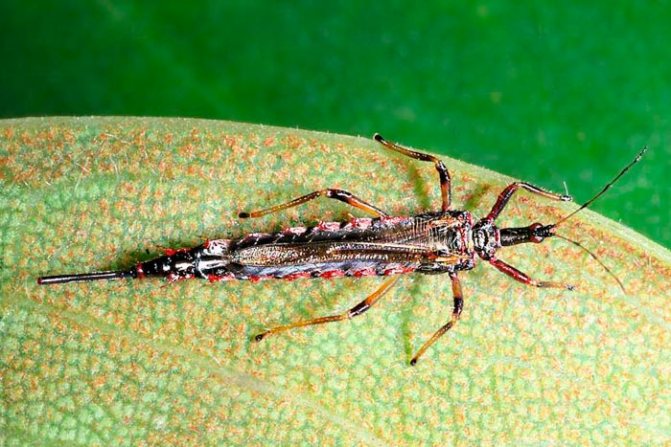

Aphids and mosaic disease
These pests settle on the flowers and leaves of the plant, which, when severely infested, turn yellow, dry out and fall off. Insects are washed off with soapy water, all affected parts are removed. In the case of strong attacks, they are treated with special drugs.
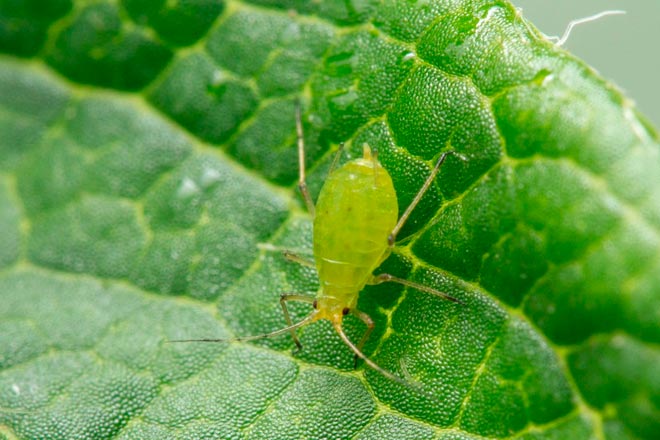

Whitefly
On the balsam leaves, you can sometimes find an adult insect or pale yellow whitefly larvae, which stick to the plant and suck useful juices from it. When a flower is damaged by this pest, insecticides or preparations based on potassium soap are used.
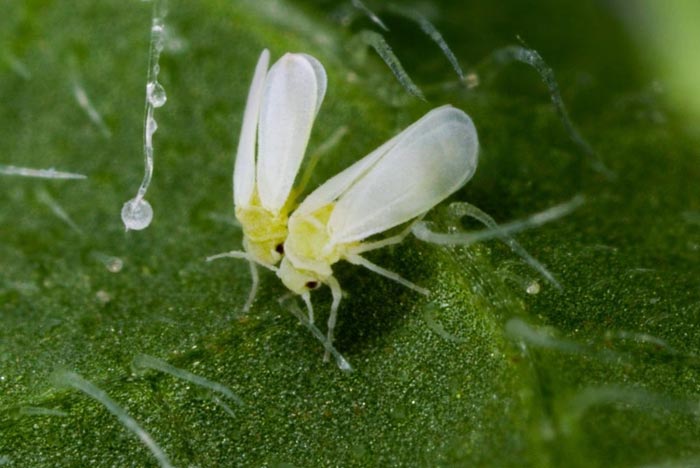

Proper and timely flower care is the best way to prevent the development of fungi and infections. If you do everything right, you will not have to take measures to save your pet from death.
No related posts
Photo
Next, you will see a photo of Balzamin's diseases and pests:
Balsam indoor disease and treatment
Nov 15 • Uncategorized • 32 Views • No Comments on Balsamin indoor disease and treatment
Content
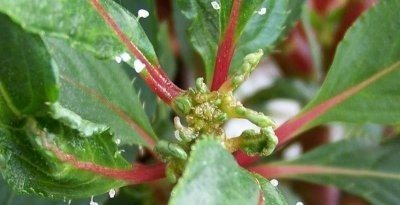

Houseplants are often subject to a variety of diseases and pests. Balsam is no exception.
Improper or insufficient care often leads to the fact that the flower weakens and becomes susceptible to disease.
To avoid disease and pests, you need to know how to quickly detect infestation and prevent or cure it.
How to get rid of pests from a plant
Balsam is a very sensitive plant that parasitic insects like to inhabit. The most often located on the bush are:
- Whiteflies;
- Cyclamen mite;
- Aphid;
- Thrips;
- Soil nematodes;
- Spider mite.
Lat. Impatiens
When ticks invade a flower, they are practically invisible at the first moments of settlement. They are located on the underside of the leaf plate; therefore, an increase in their number is practically not detected.
Upon a cursory examination of the leaf plates, insignificant yellow blotches are initially noticeable. They begin to grow right before our eyes. This suggests that the parasite population is rapidly increasing, they infect the plant until they completely destroy the shrub.
The spider mite tends to move from the affected plant to neighboring bushes. Therefore, if an infection is detected, it is necessary to remove the flowerpot with intruders away from the general collection of flowers.
When treating balsam at home, all damaged or affected leaf plates are removed.
Above, you should act with any drugs that harm and neutralize pests from the plant: chemical insecticides, alcohol tinctures, soap-ash solution. Additionally, you can influence the affected plant using ultraviolet lamps, they negatively affect pests.
When a "deformation" of the leaf plates on the bush is found, we can talk about the infection of the flower with aphids. These insects feed on the sap of foliage and stems, if they get to the rhizomes, then the bush completely dies. To combat aphids and thrips, it is necessary to use chemicals, but before using the product, all affected areas are first eliminated.
The whitefly is capable of laying eggs on the lower part of the plant. The defeat of balsam is determined by the yellowing of the surface of the leaves, drying out and abscission.
If larvae are found, they can be eliminated with chemicals, by spraying. This remedy will not work on adult flying individuals. Therefore, it is recommended to hang up Velcro for insects, treat the foliage with special solutions (soap-ash) and more often arrange shower for the bush.
Features of the
The leaves and stems of balsam are very juicy, that is, their cells contain a lot of water and little dry matter. This is well illustrated by the situation when there has been no watering for a long time: leaves and shoots wither quickly, hang like rags, losing their shape. The turgor of the leaves directly depends on their saturation with moisture.
There is the opposite situation: good watering and high humidity lead to the appearance of small droplets of sweet liquid along the edge of the leaf. It is for this ability that the balsam received the name Vanka wet.
Plant Brief
Balsam is a perennial crop, with an erect stem and fleshy toothed foliage. The maximum height of the bush is 50 cm, the length of the leaf is 8-12 cm. The inflorescences are in the axils of the plant, their shade is varied (from delicate pink to deep red).
Balsam hybrids have double flowers. After the end of the flowering period, a fruit is formed - an elongated box, which consists of 5 twisted leaves.
On a note! At the slightest touch to the box, it opens and seeds are fired from it with force. For this property, the plant is called Impatient.
Long flowering explains another name for balsam - Ogonyok. In different countries, this species also has different designations: Zealous Lisa in Germany, Vanka-wet in Russia.
Possible Incorrect Containment Procedures
So, you have purchased Balsam and now want to know about the possible difficulties in growing and the pitfalls that you may encounter during its maintenance.
- Insufficient watering. It is worth watering it abundantly, but do not allow the water to stagnate in the pot, as well as dry out the soil (it should always be wet). If the flower does not have enough moisture, you can not wait for the buds to appear.
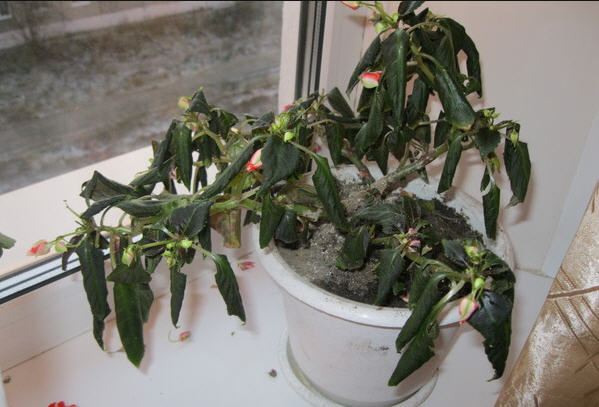

Also, a set of green mass occurs only if sufficient watering is observed. As soon as the flower senses deviations from its usual content, it will immediately begin to shed flowers and reduce its aerial part (save energy). Periodically, 2-3 times a week, it is worth spraying the leaves of Balzamin, avoiding drops of water on the flowers. This approach will help maintain an optimal humid climate, as well as prevent the appearance of pests such as spider mites, which we will talk about below. - Excessive watering is just as harmful (as it is to most other plants) in which case the roots will start to rot. The first sign will be yellowing and watery sprouts near the ground. This will be a sign of rotting roots, as well as their withering away. Due to a lack of strength, the leaves will fall off. This is a very difficult case, in order to solve such a problem, it is necessary to urgently reanimate: remove the flower from the pot, clean the roots from the soil and carefully examine them. If there is rot, cut off the damaged tissue, and treat the cuts with garden pitch or activated carbon. The pot itself must also be thoroughly cleaned of soil and rinsed with boiling water in order to get rid of rot spores. If the roots cannot be restored, you can try to cut the plants, it may turn out in this way to preserve the look you have.
- Weak lighting leads to the fact that the leaves of the plant begin to curl up into tubes, wither, turn yellow.
Vanka wet prefers good lighting as he is a native of Africa and tropical Asia, and there are about 12 hours of sunshine a day. There are cases that when transplanting a perpetual flower into the open air, for example, on a terrace or balcony, its strength was restored, and it began to bloom profusely and give side shoots. When choosing the location of the pot in the apartment, preference should be given to the southern and eastern windows. However, I want to warn you, high temperatures, over 28 degrees, and dry air is destructive for Balsams.By placing them in such conditions, you run the risk of getting "dead wood" or "dried greens" in your pot. Optimum will be 20-24 degrees Celsius, but the temperature below 15 degrees should not be lowered either. A sharp change in the regime of keeping a flower, permutation, drafts lead to the dropping of inflorescences. - It is necessary to feed Balsams once every 2-3 weeks in the months from March to October. Do not overdo it if you want to see your favorites bloom. As a fertilizer, you can choose a complex mineral. Depending on the current period: a set of green mass or flowering - and it is worth picking up fertilizer. In the first case, you need nitrogen, in the second, phosphorus and potassium. When overfeeding with any type of fertilizer, it is almost impossible to achieve flowering.
- Choosing a pot that is suitable in size is the main task of an amateur grower. If the size is too small, balsam begins to shed foliage and flowers, if it is too large, it begins to actively grow, occupy the entire volume of the soil, and then throws out a large number of side shoots. In a moderately limited space for roots, Balsam begins to feel the need for reproduction, thereby blooming in order to form seeds and multiply not by roots, but by seeds. This is the psychology of flowers. The soil should be light enough and not cakey. For these purposes, a trio of sand, peat and garden soil in equal quantities is suitable. The plant will only benefit from an annual transplant in January - February, but during flowering, this is not a noble occupation, do not disturb your pet. Also in these months you can plant Balsamin seeds. With proper care (read ideal conditions), the plant will bloom from March to November.
- Vanka wet is susceptible to damage by several pests, such as aphids, whitefly and spider mites. The mite occupies the leading position among these parasites. These pests love dry environments, so regular spraying and warm showers are the best way to prevent them. It is not difficult to determine that Balsamin is affected by a spider mite: examine the surface of the leaves, if there are yellow dots on them, some of which turn into through holes - be sure this is it.
Description of the plant
The plant takes root well and feels great on a windowsill in a pot. It is loved by flower growers for its constant flowering and easy maintenance. Its natural habitat is subtropics.
It is still found in the wild in the subtropical climates of India, Africa and North America. The flower came to Europe at the end of the 16th century and took root perfectly. It was brought to Russia only in the 19th century.
The plant species common in Russia have succulent and brittle stems with a fibrous root system.
Its leaves are oval or heart-like, tapering at the beginning, and expanding closer to the petiole.
Their edges have a jagged edge with small or large teeth, ending in a small spine.
The saturation of the color of the leaves depends on its type. In Russia, flower growers usually breed plants with light or rich green leaves. There are also types of balsam with dark green leaves with a lilac or brown tint. The veins are clearly visible on the sheet, having a color one tone lower than it.
The flowers of the plant have 5 petals and they are painted in different colors: pink, red or pale pink. There are varieties with two-color flowers: cherry, orange, white, as well as those with rose-shaped buds, double and semi-double petals.
Faded buds form green fruits, which, when ripe, form a dry capsule.
What to do and how to restore the flora?
Help for yellowing balsam is provided based on the identified cause.
Low air humidity
If the plant suffers from dry air, it must be rearranged away from heating appliances. and establish regular spraying with clean, settled water.
Watering problems
If the earthen lump with roots has been overdried, it is necessary to place the pot with the plant in a container with warm, well-settled water and leave there for 30-40 minutes. Poured in this way, "Vanka wet" can be placed under the bag for 12 hours for more effective recovery.
If the plant has been poured, remove it from the pot. together with an earthen lump and carefully examine the roots for rot.
- If decay of the root system is detected, it must be carefully cleaned of soil and all affected areas removed with sharp scissors or a knife.
- After the procedure, balsam should be transplanted into fresh soil, after washing and scalding the old pot with boiling water or replacing it with a new one.
For better survival of the root system, it is recommended to treat it with a specialized compound to stimulate growth (for example, "Kornevin").
Transplant and feeding
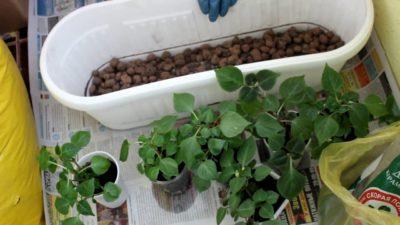

If the reason for the yellowing of the foliage is “poor” soil, it is recommended to feed the balsam with a specialized fertilizer. Both complexes for flowering indoor plants and specially designed for balsamic formulations are suitable. Before fertilizing the soil, it must be well shed with clean water. room temperature to avoid possible scalding of the roots.
If the plant is cramped in the old pot, it should be transferred to a larger container, which is no more than 1.2 times larger than the previous one.
Important: the flowerpot chosen for transplantation should not be too high, since the roots of the balsam grow more in breadth than in depth.
It is categorically not recommended to completely remove the old soil: this can cause serious stress to the root system of the plant. You should shake the flower slightly to clean it of excess soil, and in the process of transplanting, add the required amount of fresh soil to the pot. Sandy loam soil enriched with vermiculite will be optimal for transplanting, but universal soil diluted with vermiculite in a ratio of 1:10 is also suitable.
Sunburn
It will no longer be possible to cure the leaves burned by the direct rays of the sun, so they should be removed, thereby facilitating the nutrition of the surviving parts of the plant. To avoid the appearance of new burns, the balsam must be rearranged to the west or east window. If the plant cannot be moved, it should be shaded at midday.

